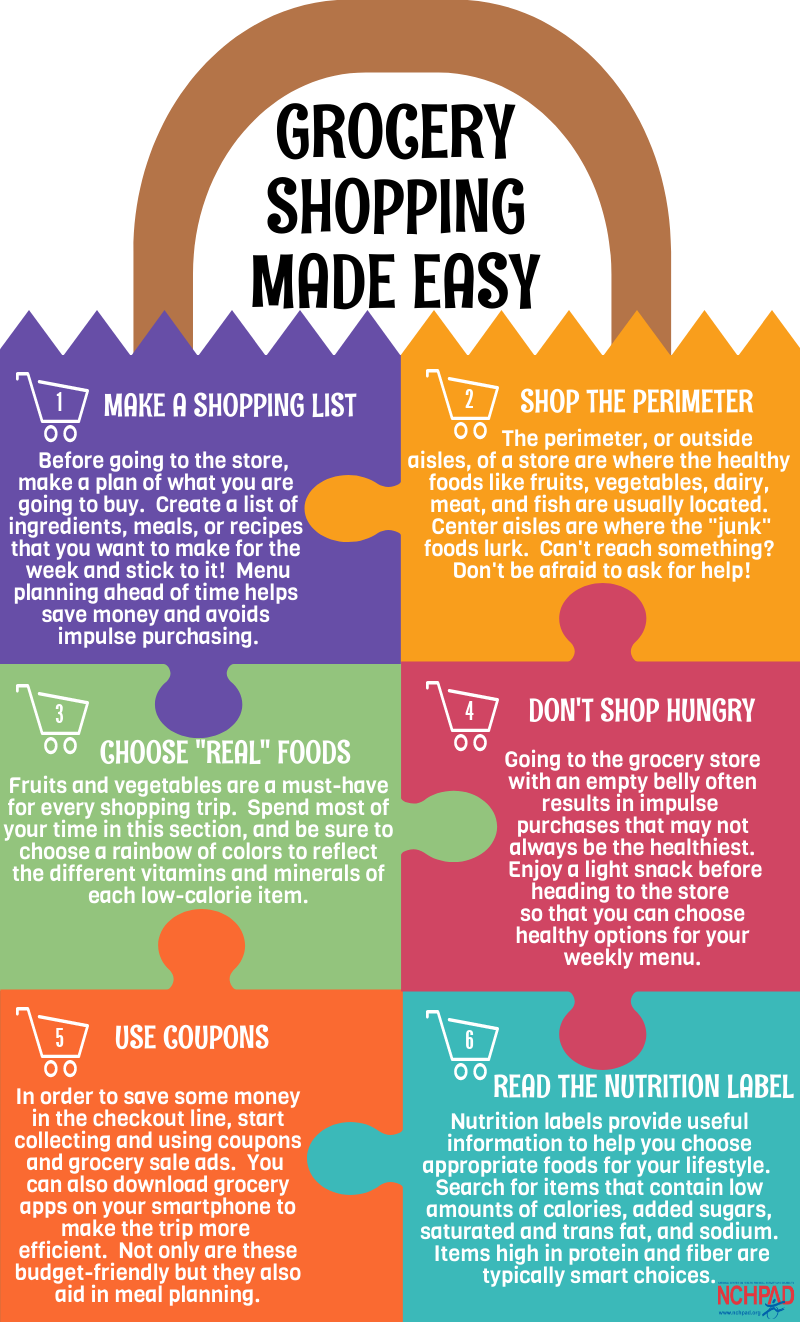By: Rebecca Cline
Do you ever feel overwhelmed when you go food shopping? There are so many options to choose from, and how do you know if you are making a healthy choice?! For someone who has a disability, access to healthy food is a key point to improving the healthy lifestyle. Learning about certain tips and resources while food shopping can make the experience more pleasurable.
If you are or know someone who has vision loss, there are smartphone apps that will enlarge text or also read aloud nutrition labels. Apps like TapTapSee or Seeing AI assist with understanding labels by simply scanning the barcode and reading the ingredients. Store employees are also great tools for answering questions about products, education prepping techniques, and discussing recipes. If you use a wheelchair or other mobility device and need assistance carrying items, you can utilize an employee to carry items and help do the shopping.
Here are some general grocery shopping tips to consider when trying to save money and also make healthy and informed choices:
1. Make a Shopping List. Before going to the store, make a plan of what you are going to buy. Create a list of ingredients, meals, or recipes that you want to make for the week and stick to it! Menu planning ahead of time helps save money and avoids impulse purchasing.
2. Shop the Perimeter. The perimeter, or outside aisles, of a store are where the healthy foods like fruits, vegetables, dairy, meat, and fish are usually located. Center aisles are where the “junk” foods lurk. Can’t reach something? Don’t be afraid to ask for help!
3. Choose “Real” Foods. Fruits and vegetables are a must-have for every shopping trip. These can be fresh or frozen. Spend most of your time in this section, and be sure to choose a rainbow of colors to reflect the different vitamins and minerals of each low-calorie item. Check out Shop the Rainbow to learn more about colorful foods.
4. Don’t Shop Hungry. Going to the grocery store with an empty bell often results in impulse purchases that may not always be the healthiest. Enjoy a light snack before heading to the store so that you can choose healthy options for your weekly menu.
5. Use Coupons. In order to save some money in the checkout line, start collecting and using coupons and grocery sale ads. You can also download grocery apps on your smartphone to make the trip more efficient. Not only are these budget-friendly but they also aid in meal planning.
6. Read the Nutrition Label. Nutrition labels provide useful information to help you choose appropriate foods for your lifestyle. Search for items that contain low amounts of calories, added sugars, saturated and trans fat, and sodium. Items high in protein and fiber are typically smart choices.
Click here to download infographic.
Updated 2/15/2018

